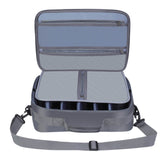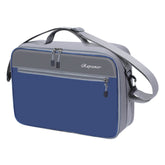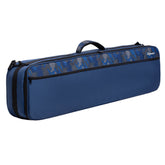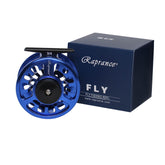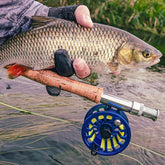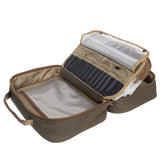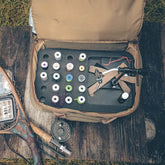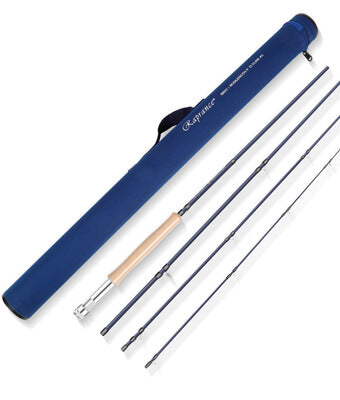How to choose the right type of waders?
Chest Waders, Waist Waders, Hip Waders: A Comprehensive Guide to Fishing Waders and Breathable Options
Choosing the right type of waders can significantly enhance your fishing experience. Chest waders, waist waders, hip waders, and breathable options each serve a unique purpose, making it essential to understand their features and benefits. As I navigate through different fishing environments, I’ve found that the right pair of waders can keep me comfortable, dry, and focused on the catch rather than worrying about my gear.

When selecting waders, consider factors like the water depth, temperature, and the type of fishing you'll be doing. Stockingfoot waders are popular for their versatility, allowing for easy pairing with various fishing boots. In contrast, the choice between chest and waist waders often comes down to personal preference and specific fishing conditions.
Investing in quality waders is crucial for anyone passionate about fishing. Not only do they protect against the elements, but they also serve as a vital component of your fishing gear. With the right information, you'll make a confident choice that enhances your fishing adventures.
Anatomy of Waders

Waders come in various styles and materials, designed for specific activities and environments. Understanding their anatomy is crucial for selecting the right pair for your needs.
Examining Different Types
I often categorize waders into several types, primarily focusing on how they fit and their intended use.
-
Chest Waders: Perfect for deeper waters, they extend up to the chest and provide maximum protection.
-
Waist Waders: These are ideal for shallower environments, allowing for better mobility while keeping water levels manageable.
-
Hip Waders: They offer a compromise between waist and chest waders, suitable for rivers and streams with moderate depths.
-
Bootfoot Waders: This design combines boots and wader, offering insulation and convenience, particularly in colder waters.
-
Stockingfoot Waders: Allowing for more customization, these require separate boots and are often seen as more comfortable for long wear.
Materials and Technologies
The performance of waders is heavily influenced by materials and construction technologies.
-
Neoprene Waders: Known for insulation, they're excellent for cold waters, but can be less breathable. Commonly available in various thicknesses.
-
Breathable Waders: Utilizing materials like 4-layer Gore-Tex or 4-ply nylon, these waders allow moisture management while keeping water out.
-
Polyester and Nylon: Lightweight options that offer good durability and protection, especially in warmer seasons.
Each material type contributes to how well the waders regulate temperature and resist wear.
Waders Fit and Comfort
A proper fit is essential for comfort and effectiveness.
-
Sizing: Waders come in different sizes, often including options for different body shapes.
-
Adjustability: Many model features adjustable straps and belts, allowing for a tailored fit.
-
Layering: Consider what you'll wear underneath. Adding insulation can affect your fit.
Comfort can dramatically impact your time spent in the water, so choose waders that accommodate your activity level and duration.
Selecting Fishing Waders

Choosing the right fishing waders can significantly enhance your fishing experience. Factors such as type, material, and fit are crucial to consider when making a decision.
Chest Waders for Fly Fishing
Chest waders are ideal for fly fishing, offering a full range of motion and protection against cold water. I prefer breathable stockingfoot chest waders for their lightweight design and comfort during long hours on the water.
These waders typically feature a durable outer layer and a waterproof lining, ensuring I stay dry while navigating through streams. Neoprene stocking feet provide insulation for colder conditions, while breathable options work well in warmer weather.
It's essential to find waders that fit snugly but allow for mobility. Consider waders with adjustable straps and reinforced seams for added durability.
Pros and Cons of Bootfoot vs Stockingfoot
When selecting between bootfoot and stockingfoot waders, several factors come into play. Bootfoot waders come with integrated boots, offering convenience and warmth. They're perfect for quick transitions but can be bulky.
On the other hand, stockingfoot waders allow me to pair them with specific footwear, like felt-soled or studded boots, providing better traction. This versatility is favorable for various fishing conditions.
| Feature | Bootfoot Waders | Stockingfoot Waders |
|---|---|---|
| Convenience | Easy to put on and take off | Requires additional boots |
| Warmth | Naturally warmer | Insulation depends on boots |
| Traction | Fixed sole | Versatile choices |
Ultimately, my choice depends on the type of fishing and comfort needed. Each option has its merits; the right waders enhance my time on the water.
Additional Wader Features

When selecting waders, considering additional features can greatly enhance your fishing experience. Built-in accessories and innovative enhancements offer practical benefits that can improve functionality and comfort.
Built-In Accessories
Many waders come equipped with useful accessories. Gravel guards are a common feature, designed to prevent debris from entering the wading boot. These guards help maintain comfort and stability while wading through riverbeds or muddy areas.
I also appreciate wading belts included with some models. They provide added security by keeping water out and ensuring a snug fit. This is especially important when navigating deeper waters.
For younger anglers, youth waders often have additional built-in features tailored for comfort and usability. Look for adjustable straps or reinforced knees, as these can enhance the durability and fit, making the experience more enjoyable.
Innovative Wader Enhancements
Modern waders often include innovative features that elevate their performance. For instance, breathable materials allow moisture to escape while keeping water out. This is crucial for maintaining comfort during long fishing trips.
Some waders now incorporate pockets with waterproof zippers for storing essential items like licenses or snacks. Keeping valuables dry is vital when wading.
I also find that integrated security systems or attachment points for accessories enhance convenience. These systems allow quick access to tools, making gear management seamless. Additionally, certain wader models now use PVC materials for increased durability without sacrificing flexibility, making them suitable for various fishing environments.
Care and Maintenance

Proper care and maintenance of waders is crucial for extending their lifespan and ensuring optimal performance. By following specific storage techniques and addressing any damage promptly, I can keep my waders in excellent condition.
Proper Storage and Handling
I make sure to clean my waders after each use. This involves rinsing them with fresh water to remove dirt and salt. It’s essential to dry them thoroughly, either by hanging them in a cool, shaded area or using a fan.
When storing my waders, I avoid folding them in ways that could create creases or stress points. Instead, I roll them loosely or hang them to prevent damage. A dedicated storage bag can provide further protection.
For new waders, I read the manufacturer's recommendations carefully. Used waders might require additional attention, especially if they show signs of wear.
Repairing Damaged Waders
If I notice any punctures or leaks, I act quickly to repair them. For minor damage, I use a patch kit specifically designed for waders. This usually includes adhesive patches that create a watertight seal.
If the damage is more significant, I consider taking the waders to a professional for repair. Many outdoor shops offer repair services that can extend the life of my waders.
Additionally, I routinely check the seams and zippers for wear. Applying seam sealant can help prevent leaks at the stitching, and ensuring zippers are clean and lubricated improves functionality.
Key Brands and Products

When selecting waders, the range of options can be overwhelming. I’ll outline some leading manufacturers and budget-friendly alternatives to help narrow down your choices.
Premium Wader Manufacturers
For those seeking high performance, premium brands often come with advanced features.
-
Simms G4: Known for durability and comfort, the G4 series is ideally suited for seasoned anglers. Its Gore-Tex material ensures breathability while keeping water out.
-
Patagonia Swiftcurrent: This model is designed for rugged use, with reinforced panels to withstand tough conditions. The fit is comfortable, offering flexibility during movement.
-
Orvis Pro: Combining innovative design with high-quality materials, these waders are lightweight yet durable. The Pro series features convenient storage options and a well-thought-out suspenders system.
Budget-Friendly Options
For anglers seeking reliable waders without a hefty price tag, there are commendable options available.
-
Raprance RP002: These waders offer excellent value and comfort. They are lightweight and designed for casual use, making them ideal for beginner anglers.
-
Simms Tributary: This series provides an entry-level option without compromising quality. Designed for occasional use, the Tributary offers essential features at a reasonable price.
These brands illustrate that it's possible to find quality waders across different price points. Selecting the right wader hinges on your fishing habits, preferences, and budget.

